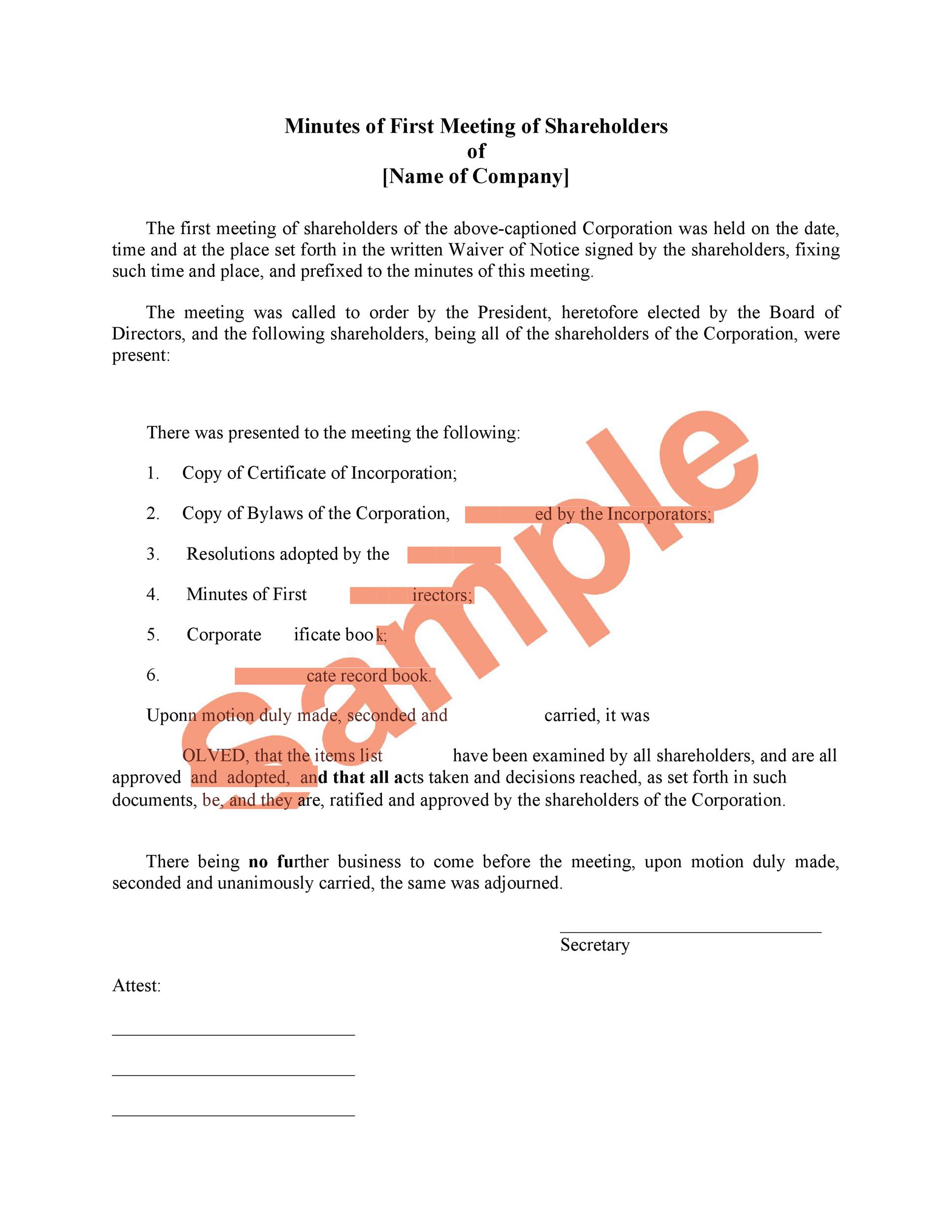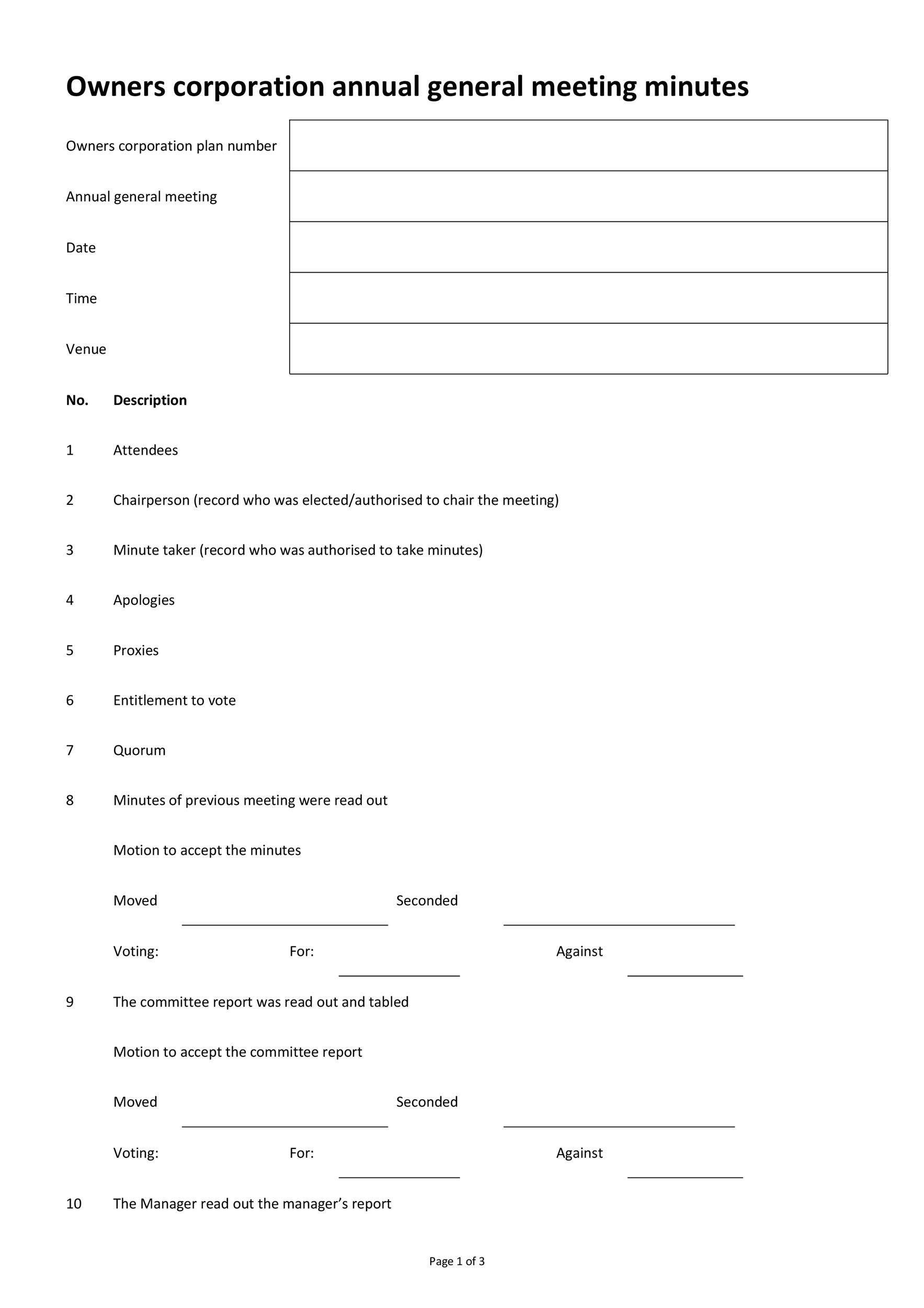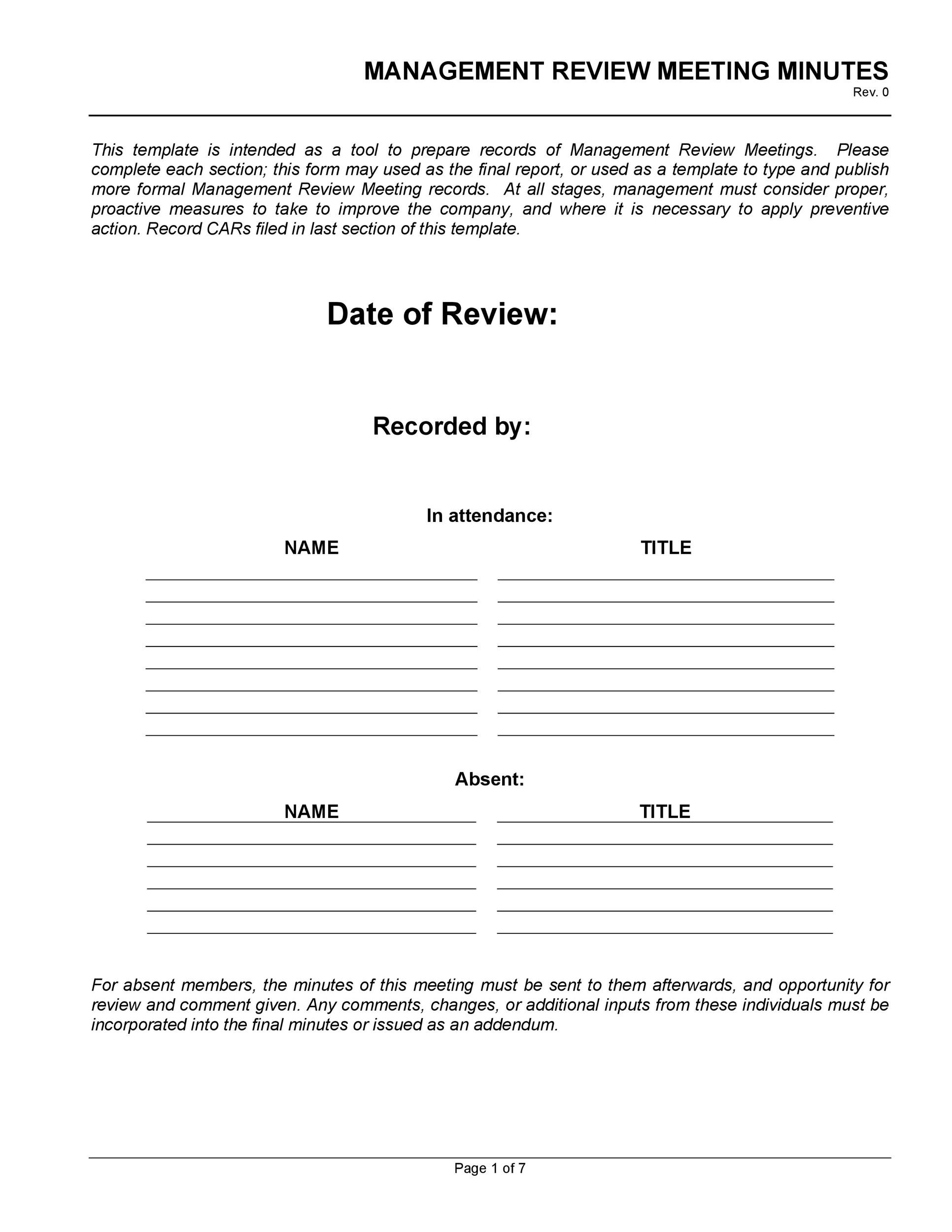The daily operations are an organization’s lifeline. Every employee plays his or her role effectively by performing their share of tasks diligently. When official meetings take place and you’re in charge of preparing the corporate minutes, you’re performing a very important task. Information is the key. Corporate or company minutes serve as a documentation for the governance of your corporation like official board meetings. That’s why it’s extremely important to record this information as it happens.
Table of Contents
Corporate Minutes Templates
What are corporate minutes?
Corporate minutes refer to a document which contains the topics and issues dealt with during formal meetings. Usually, a secretary is in charge of recording the corporate minutes sample during the meeting. The document contains a summary of the most important decisions made, and it doesn’t have to contain minute details.
There are different things you need to include in your corporate minutes template as you need these to recall the most important parts of the meeting which transpired. To make the document effective, include the following information:
- The date, time, and venue of the meeting
- Everyone present at the meeting (take note of those who arrived late or left early)
- Who led the meeting
- The reason for the meeting
- The points on the meeting’s agenda
- The results of a vote (for this part, you have to go into detail)
- When the meeting got adjourned
Corporate Minutes Samples
How to write minutes of a meeting example?
Most of the time, the law requires corporations to come up with corporate minutes every time they have important meetings. This is a very important document which serves as a reference or which you can use in lawsuits. Even if you use a corporate minutes template, you should know how to write the document properly. To guide you, here are some pointers:
Part 1: During the meeting
- Take notes during the meeting. To do this, you have to bring a notepad where you can write down everything you see and hear during the meeting.
- Make a list of everyone present at the meeting. Also, take note of those who didn’t attend but should have been there. Include any invited consultants and guests on your list too.
- Write down the purpose of the meeting. There are several reasons why meetings have to take place so you should write down the purpose of your current meeting.
- Check whether the attendees accepted the notes of the prior meeting. This should be the first item on the meeting’s agenda. If you made the meetings of the previous meeting, have them distributed in advance to everyone attending the meeting.
- When the participants start discussing the agenda items, listen carefully and take a lot of notes. Your document should include a summary of the discussion which happened for each agenda item. Accuracy is important so you should focus on what you’re doing and listen carefully to the ones talking.
- If any of the participants distribute documents for perusal, take note of the documents too. Include the title of the document and the date. Also, take a copy of the distributed document do you can attach it to your corporate minutes.
- If a vote occurred during the meeting, take note of the results. Count how many people voted positively, how many people voted negatively, and abstentions.
- When the meeting comes to a close, take note of the details too. Specifically, write down the time the meeting got adjourned and when they set the next meeting.
Part 2: After the meeting
- If possible, type the corporate minutes right after the meeting. This is important so that you remember all the details of the meeting and you can make a complete report. When typing the minutes, use complete sentences and standard grammar.
- Identify the basic details of the meeting including the time, the date, the venue, and all of the participants.
- Take note of the time when the person who called for the meeting started it. Then state whether or not they accepted the minutes of the previous meeting.
- Include the presentations or reports given during the meeting. There are some meetings where the participants should give reports while there are some meetings where a specific person gives a presentation that’s relevant to an item on the agenda.
- Summarize the discussions made about the items on the agenda. Pay close attention to actions or resolutions taken regarding these items. Make use of simple but clear language. You don’t have to include any unnecessary adjectives or words that clutter your document. If there are any documents involved, identify them as well.
- For the most important items on the agenda, provide a fuller summary. During meetings, some of the agenda items are more significant than the others. Therefore, you need to know how to determine the significance of these items. Some items require special care, especially when there’s a possibility of legal issues arising because of a decision made during the meeting. In such a case, judges and lawyers use the document you create as an accurate account of how the board of directors acted. Protecting the board and everyone else involved during the meeting entails providing all of the details as they happened.
- After you’ve written down the summaries of all the agenda items, add any remaining information namely:
Announcements regarding any issues or upcoming events.
An executive session conducted by the board after all of the other attendees left the meeting’s venue.
The meeting’s adjournment. - After creating this draft, print it out and distribute it to those in charge of reviewing and approving the document. Make sure to follow the policies of your company regarding corporate minutes.
- In cases where the Board of Directors make any comments or ask you to make revisions, incorporate all of these.
- After you’ve finalized the documents, don’t make any further changes to it. You can only finalize the document after you got the final approval from the Board. The only changes you can make are if you spot any typos, wrong spelling, and other minor mistakes. But never make any substantive changes to the document unless approved by the board chairperson.
- Print out a copy of the approved and finalized document and keep it in your file. The best place to store this document is along with all of your other corporate or official records.
- If any documents got distributed during the meeting for review, attach a copy along with the corporate minutes before filing.
- Finally, get rid of any drafts and notes you’ve made after the approval and finalization of the document.
Company Minutes
Do I have to file corporate minutes?
Corporate minutes are the official and legal record of any major decisions and activities done by the company. Even if your company has a single owner, he must keep all of these documents in his file for future references. As per the law in the location of your company, you need to see the requirement of a corporate meeting. Usually, companies are required to have at least one annual meeting every year. This is an important meeting, and when it happens, you have to take note of the company minutes.
Since we consider corporate minutes as legal documents, you should store them in a secure location along with your other documentation. It doesn’t have to be an elaborate system. Simply print a copy of the document and place it in a folder or a binder. You can also save the file in a secure location in your computer in case you need to refer to it again or print out another copy.
How long should corporate minutes be kept?
If you’re in charge of writing the company minutes, you must take notes during the meeting itself. Write down everything that has been discussed in the meeting so that you don’t forget any key details. You don’t have to write down every word said, especially if some of the statements aren’t relevant. To make things easier for you, download this corporate minutes template so you can write down the minutes in a clear and organized way.
No matter who talks during the meeting, you must pay close attention. Then write down any important points of key phrases on the template. If an argument occurs, take note of the main points then indicate if the people arguing agreed or disagreed in the end. You don’t have to write down everything said during the argument.
After the meeting, it would be better for you to type everything you’ve written on your computer. Then print a copy out for anyone who needs to know the corporate minutes. One advantage of typing the minutes on your computer and saving the file is that you can furnish a copy to anyone who needs it.
Although a corporate minutes sample doesn’t have to contain all of the details of the meeting, it should contain the most important points. Before the document becomes official, the corporation’s Board of Directors should approve it first. This is an essential step, especially since you can use it to prevent any legal issues.
This document serves as written evidence of all the decisions made during the meeting. In terms of keeping this document in your files, this would depend on your company’s policies. Usually, though, it’s recommended to keep the minutes for a minimum of seven years.





































